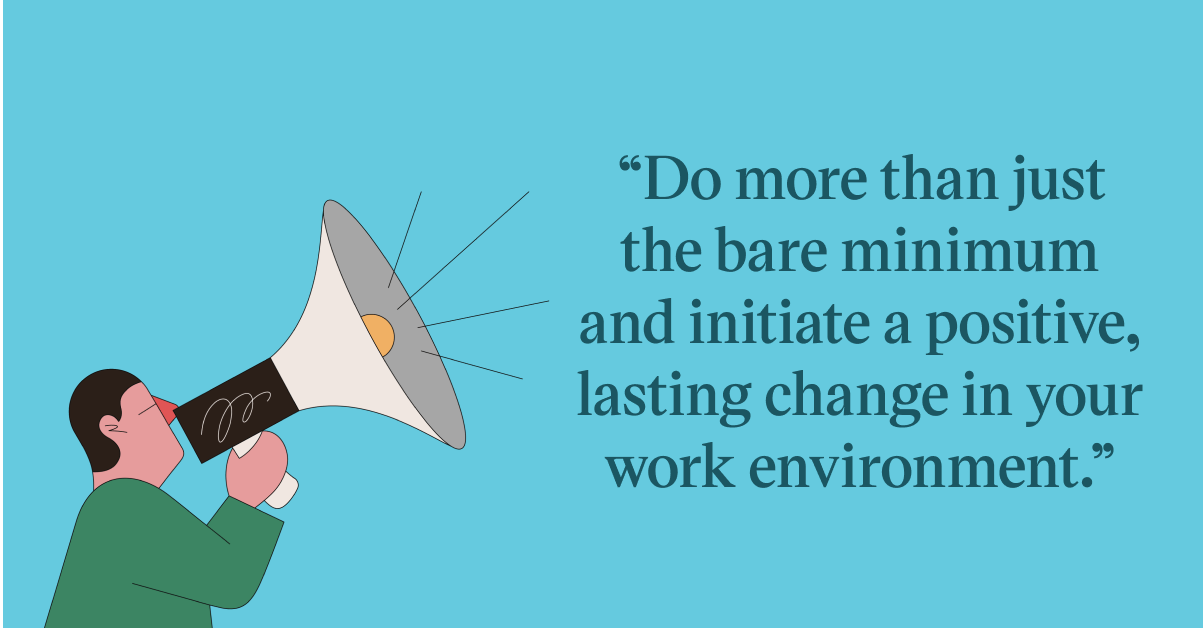
The importance of sexual harassment policies in the workplace

Unfortunately, sexual harassment continues to be a significant issue in Australian workplaces. According to Safe Work Australia, one in three people (33%) have experienced workplace sexual harassment in the last five years, including 39% of women and 26% of men.
Accordingly, workplace sexual harassment is an extremely important issue, with serious, far-reaching consequences for both employees and employers. Individuals who experience workplace sexual harassment face an unpleasant, hostile or dangerous work environment, often daily, with a high risk of physical or emotional harm. With productivity and motivation likely to suffer due to the harassment, their career progression can also be affected, and they may even be forced out of their job and income.
Companies also suffer the consequences of sexual harassment in their own way, becoming liable to negative impacts such as poor work culture, low morale and productivity levels, and financial stress from higher staff turnover.
With this in mind, we'll look at the importance of strong, well-defined sexual harassment policies to help prevent workplace sexual harassment.
Preventing workplace sexual harassment
Being free from sexual harassment is a basic human right. Under Australian law, we all have a legal right to live and work free from sexual harassment. For employees, this means both during working hours and at any form of work-related training activities or functions.
As an employer, regardless of whether you’re a large-scale organisation or a small business, you have a responsibility to maintain a workplace that is free from sexual harassment. Employers and managers must take active steps to promote a safe and positive workplace for their employees.

The Australian Human Rights Commission defines sexual harassment as “any unwanted or unwelcome sexual behaviour, which makes a person feel offended, humiliated or intimidated.”
Sexual harassment can take many different forms. Whether someone is staring inappropriately, making sexually suggestive comments, telling or emailing inappropriate “jokes” or subjecting you to unwelcome physical contact – all of these examples are considered sexual harassment and must be addressed.
To do so, Safe Work Australia recommends taking the following steps to prevent workplace sexual harassment:
- Implement workplace policies
- Create a safe in-person and online work environment
- Create a positive and respectful workplace culture
- Address unwanted or offensive behaviour early
- Provide training and education on preventing sexual harassment
- Talk to your workers
- Implement safe work systems and procedures
- Encourage workers to report any sexual harassment
- Quickly respond to reports of sexual harassment
What does a sexual harassment policy do?
The key to preventing sexual harassment is for employers and management to ensure that they have a clear policy in place, that defines sexual harassment, outlines unacceptable behaviour, and has clear consequences.
Implement a professional sexual harassment policy and provide ongoing training for all staff to make it clear that sexual harassment is 100% unacceptable in your workplace. Make sure that you and other managers encourage the prompt reporting of incidents and always act immediately on any complaints that involve sexual harassment.
Do more than just the minimum
In group environments such as the workplace, sexual harassment can have an unfortunate cumulative effect on other staff who witness the behaviour, serving to reinforce and normalise negative male/female stereotypes – especially if the behaviour is not stopped immediately. This is why it’s so important to speak up when you see or hear something unacceptable, even if you’re not in a management position.
If you are in a management role, you have an opportunity to make even more of a difference to how your staff think about sexual harassment in the workplace. Take a walk around the office or job site, taking note of any offensive posters, calendars or screensavers, and have them removed immediately. Make it clear that your sexual harassment policy is to be taken as seriously as it deserves to be. Keep the conversation going. Do more than just the bare minimum and initiate a positive, lasting change in your work environment.

Make sure that sexual harassment training is ongoing, with refresher training sessions held at least once a year to remind staff of the policy and reinforce its key messages. You can also hold separate sessions for managers and supervisors, to educate them on the policy and make sure they are aware of the correct procedures.
Online training resources for managers
To get the ball rolling on these staff refresher courses, we recommend the short online courses Sexual Harassment training for Supervisors and Managers and Sexual Harassment Training for Employees.
These courses feature modules from world-class training providers on identifying workplace sexual harassment, preventing workplace sexual harassment, and anti-bullying.
Also available online, and perfect for follow-up training sessions with managers and supervisors, is a short course called Subtle Sexual Harassment – Management’s New Responsibilities.
This course goes beyond the basic definitions of sexual harassment, to examine legal liability issues and questions of personal responsibility that managers must face. It also offers guidance on important factors to consider when creating an effective sexual harassment policy, as well as practical advice on how to handle reports and complaints.
Whichever training tool you decide to use for your teams, you’ll be getting staff engaged and thinking about the issue – which is a step closer to creating a safe and positive workplace free of sexual harassment.
For more insights, be sure to subscribe to the Go1 newsletter to stay on top of all the latest L&D trends. Or, you can book a demo today to find out how Go1 can support your team’s learning needs.




